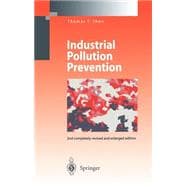
What is included with this book?
|
1 | (20) | |||
|
2 | (2) | |||
|
4 | (1) | |||
|
5 | (10) | |||
|
15 | (3) | |||
|
18 | (1) | |||
|
19 | (2) | |||
|
21 | (18) | |||
|
23 | (1) | |||
|
24 | (3) | |||
|
27 | (1) | |||
|
27 | (4) | |||
|
31 | (6) | |||
|
37 | (2) | |||
|
39 | (20) | |||
|
40 | (3) | |||
|
43 | (3) | |||
|
46 | (11) | |||
|
57 | (1) | |||
|
58 | (1) | |||
|
59 | (22) | |||
|
59 | (3) | |||
|
62 | (14) | |||
|
76 | (4) | |||
|
80 | (1) | |||
|
81 | (60) | |||
|
82 | (5) | |||
|
87 | (14) | |||
|
101 | (19) | |||
|
120 | (17) | |||
|
137 | (4) | |||
|
141 | (10) | |||
|
141 | (2) | |||
|
143 | (1) | |||
|
144 | (4) | |||
|
148 | (1) | |||
|
149 | (2) | |||
|
151 | (18) | |||
|
151 | (1) | |||
|
152 | (2) | |||
|
154 | (4) | |||
|
158 | (7) | |||
|
165 | (1) | |||
|
165 | (1) | |||
|
166 | (1) | |||
|
167 | (2) | |||
|
169 | (14) | |||
|
169 | (6) | |||
|
175 | (3) | |||
|
178 | (2) | |||
|
180 | (1) | |||
|
181 | (1) | |||
|
182 | (1) | |||
|
183 | (32) | |||
|
184 | (9) | |||
|
193 | (2) | |||
|
195 | (11) | |||
|
206 | (2) | |||
|
208 | (3) | |||
|
211 | (2) | |||
|
213 | (2) | |||
|
215 | (20) | |||
|
216 | (1) | |||
|
217 | (15) | |||
|
232 | (1) | |||
|
233 | (1) | |||
|
234 | (1) | |||
|
235 | (12) | |||
|
236 | (1) | |||
|
236 | (2) | |||
|
238 | (1) | |||
|
239 | (5) | |||
|
244 | (3) | |||
|
247 | (24) | |||
|
249 | (3) | |||
|
252 | (4) | |||
|
256 | (4) | |||
|
260 | (2) | |||
|
262 | (4) | |||
|
266 | (2) | |||
|
268 | (3) | |||
|
271 | (14) | |||
|
272 | (4) | |||
|
276 | (2) | |||
|
278 | (1) | |||
|
279 | (2) | |||
|
281 | (2) | |||
|
283 | (2) | |||
|
285 | (12) | |||
|
286 | (2) | |||
|
288 | (3) | |||
|
291 | (3) | |||
|
294 | (2) | |||
|
296 | (1) | |||
|
297 | (22) | |||
|
297 | (1) | |||
|
298 | (2) | |||
|
300 | (4) | |||
|
304 | (8) | |||
|
312 | (3) | |||
|
315 | (1) | |||
|
316 | (3) | |||
|
319 | (20) | |||
|
320 | (1) | |||
|
320 | (2) | |||
|
322 | (8) | |||
|
330 | (4) | |||
|
334 | (2) | |||
|
336 | (1) | |||
|
337 | (2) | |||
| Appendix A: Pollution Prevention Assessment Worksheets | 339 | (12) | |||
| Appendix B: Industry-Specific Checklists | 351 | (10) | |||
| Appendix C: Pollution Prevention Program Checklist | 361 | (2) | |||
| Appendix D: U.S. EPA's Current Voluntary P2 Programs | 363 | (8) | |||
| Appendix E: The USEPA's Toxic Chemical Release Inventory Reporting Form R Part II. Chemical-Specific Information | 371 | (8) | |||
| Appendix F: The New Jersey Department of Environmental Protection and Energy's Release and Pollution Prevention Report (DEQ-114) Section B | 379 | (4) | |||
| Appendix G: The United States University-Affiliated Pollution Prevention Research and Training Centers | 383 | (28) | |||
| Appendix H: Reading suggestions | 411 | (6) | |||
| Brief Biography | 417 | (2) | |||
| Subject Index | 419 |
The New copy of this book will include any supplemental materials advertised. Please check the title of the book to determine if it should include any access cards, study guides, lab manuals, CDs, etc.
The Used, Rental and eBook copies of this book are not guaranteed to include any supplemental materials. Typically, only the book itself is included. This is true even if the title states it includes any access cards, study guides, lab manuals, CDs, etc.